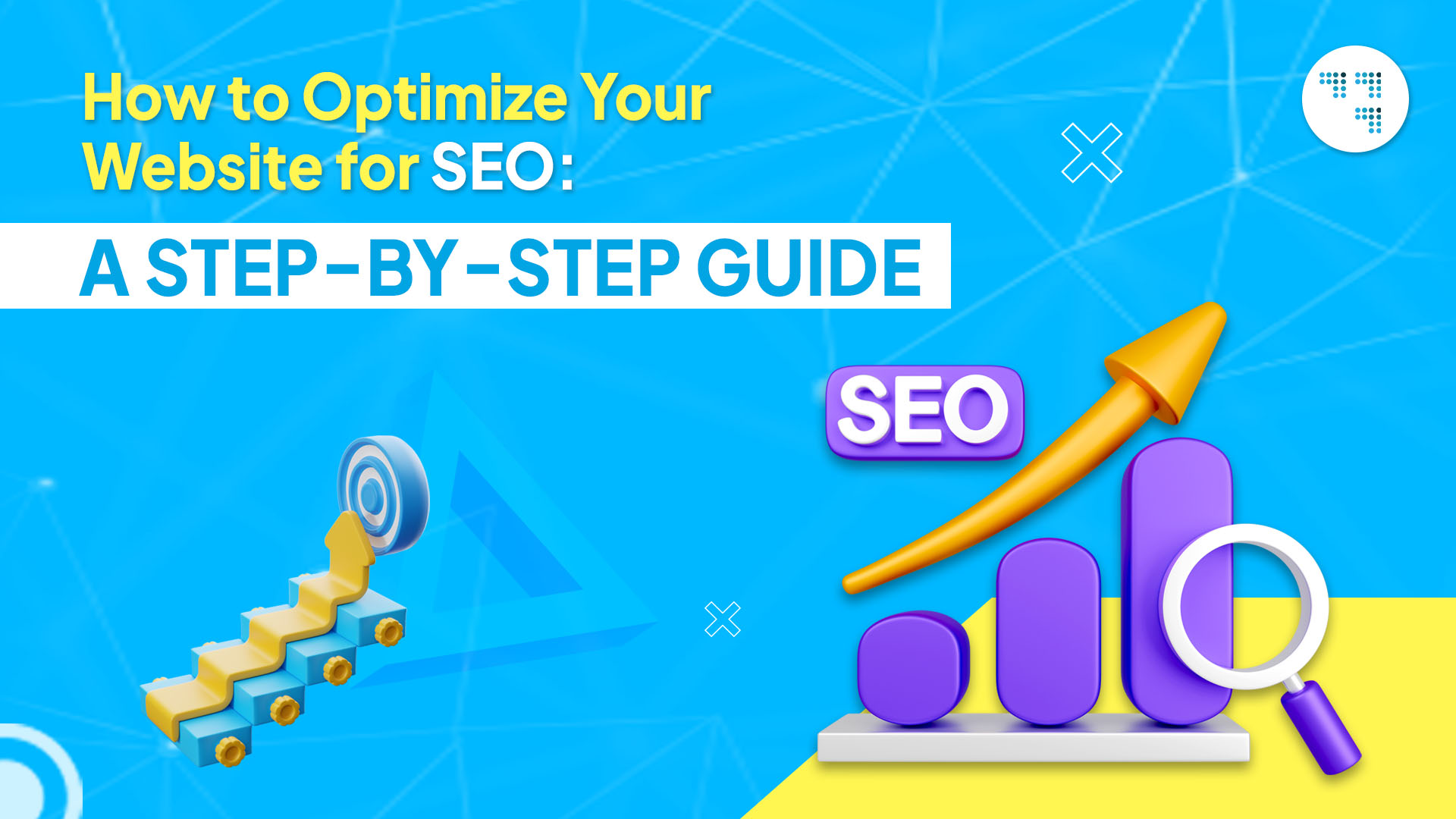
What if I told you that your website is sitting on untapped potential? Did you know that over 53% of website traffic comes from organic search results? If your site’s not optimized for search engines, you’re missing out on a huge chunk of visitors. But don’t worry—we’re here to help.
This guide will walk you through how to optimize your website for SEO step by step. By the end, you’ll have a clear roadmap to boost your rankings, attract more visitors, and, most importantly, grow your business. Let’s break it down, starting with why SEO is so important.
Why SEO Matters for Your Website
Search Engine Optimization (SEO) is all about ensuring your website gets noticed. Think of it as making sure your site is on the front page of the biggest meet-and-greet event online—Google’s search results. Here’s why it matters and how to optimize your website for SEO:
- Visibility: If users can’t find you, they can’t visit your site. SEO gets you seen.
- Credibility: A higher ranking on search engines establishes trust with your audience.
- Traffic & Sales: SEO drives organic traffic, bringing potential customers directly to you.
- Cost-Effective: Unlike paid ads, SEO delivers long-term results without ongoing costs.
- Competitive Edge: Staying optimized helps you outrank competitors and capture more market share.
Whether you’re a small business, a marketer, or an entrepreneur, learning how to optimize your website for SEO will create long-term benefits for your online presence. Contact the best digital marketing agency in Bangalore to get started today!
How to Optimize Your Website for SEO
Step 1: Conduct Keyword Research
Keywords are essential for improving search engine rankings and driving traffic to your site. They help search engines and users understand your content. To learn how to optimize your website for SEO, start by conducting effective keyword research. Here’s how to find the best keywords:
How to Find the Best Keywords:
- Brainstorm Topics: Start with topics relevant to your business. For instance, if you own a bakery, potential topics could be “gluten-free cupcakes” or “wedding cake designs.”
- Use Tools Like Google Keyword Planner: Tools such as Google Keyword Planner, SEMrush, and Ahrefs can help you identify high-volume, low-competition keywords.
- Focus on Long-Tail Keywords: Instead of targeting broad terms like “cakes,” go for long-tail keywords like “best chocolate cake recipe for beginners.” These attract narrower, more intent-driven traffic.
Pro Tip: Keep a balance between keywords with high search volume and low competition. You want terms that draw traffic but are realistic to rank for.
Step 2: Optimize On-Page SEO Elements
On-page SEO is where the magic happens in improving your site’s visibility on search engines. It focuses on optimizing your website’s elements like titles, meta descriptions, headers, and content to rank higher. If you’re wondering how to optimize your website for SEO, start by using relevant keywords, improving site speed, and ensuring a mobile-friendly design.
Title Tags and Meta Descriptions
Your title tag is one of the first things search engines and users see. Make it compelling and include your primary keyword within the first 60 characters. Similarly, your meta description should briefly explain what the page is about in under 155 characters.
Example:
- Title Tag: Top 10 Tips for Decorating Wedding Cakes | [Your Bakery Name]
- Meta Description: Discover expert tips for decorating stunning wedding cakes. Read our guide to wow your clients and elevate your baking game.
Headers (H1, H2, H3)
Organize your content with meaningful headings. Use H1 for the main title, and H2s and H3s for subheadings. Incorporate keywords naturally within headings.
URL Structure
Short, clean URLs improve user experience and help search engines understand the content of your page.
Example of an optimized URL:
www.yourwebsite.com/seo-tips-for-beginners
Internal and External Links
- Internal Links: Link to relevant pages on your website to encourage users to explore more of your content.
- External Links: Link to credible sources to build authority and trustworthiness.
Step 3: Improve Website Speed and Performance
A slow website is like a long wait at a restaurant—visitors simply won’t stick around. Faster load speeds not only improve user experience but also enhance search engine rankings. Learning how to optimize your website for SEO is essential to ensure faster loading times, better engagement, and higher visibility, helping your site stand out from the competition.
Tips to Improve Speed:
- Compress images using tools like TinyPNG.
- Use a Content Delivery Network (CDN) to reduce latency.
- Enable browser caching for faster repeat visits.
- Remove heavy scripts or plugins you don’t need.
- Minify CSS, JavaScript, and HTML to improve load times.
Step 4: Make Your Website Mobile-Friendly
More than half of website traffic now comes from mobile devices, which makes mobile optimization essential for reaching your audience. If your site isn’t mobile-friendly, you could lose visitors and harm your rankings. Learning how to optimize your website for SEO can ensure your site is fast, responsive, and user-friendly, helping you attract and retain more users.
How to Check Mobile Friendliness:
Use Google’s Mobile-Friendly Test tool to see how your website performs on smartphones and tablets.
Quick Fixes:
- Use responsive web design to ensure your site looks great on all devices.
- Avoid large pop-ups that negatively impact mobile user experience.
- Ensure buttons and links are spaced for easy navigation on touch screens.
- Optimize images and media files for faster loading times.
- Focus on mobile-first indexing as part of how to optimize your website for SEO.
Step 5: Produce High-Quality Content
Content plays a crucial role in improving your search engine rankings. If you’re wondering how to optimize your website for SEO, focus on creating engaging, high-quality content that provides value to your audience. Search engines prioritize websites with relevant and useful information, so make content a top priority to boost visibility and drive organic traffic to your site.
Content Tips:
- Focus on your audience’s pain points and questions.
- Incorporate keywords naturally (avoid keyword stuffing).
- Use a mix of blog posts, videos, infographics, and case studies.
- Update old content with the latest information to keep it fresh.
Example:
If your audience is searching for “easy SEO tips,” create a blog post titled “10 Actionable SEO Tips for Beginners (No Tech Skills Needed).”
Step 6: Build Backlinks to Strengthen Authority
Backlinks, also known as inbound links, are essential for boosting your website’s authority and visibility. They act as votes of confidence from other sites, signaling that your content is valuable. If you’re learning how to optimize your website for SEO, building high-quality backlinks should be a priority. They help improve rankings and drive more organic traffic to your site.
How to Earn Backlinks:
- Guest Posts: Write for reputable websites in your industry.
- Create Linkable Content: Publish original research, infographics, or tutorials that others will want to share.
- Reach Out: Politely ask industry blogs to link to your content if it’s relevant.
Step 7: Monitor and Measure Performance
SEO is an ongoing process that requires consistent monitoring and adjustments. To improve results, track your performance regularly to identify what’s working and where improvements are needed. Understanding how to optimize your website for SEO is key to gaining better visibility, attracting more organic traffic, and staying ahead of competitors in search engine rankings.
Tools to Use:
- Google Analytics for traffic insights.
- Google Search Console for indexing and performance tracking.
- Ahrefs for keyword and backlink analysis.
- SEMrush for competitor analysis.
- Moz for SEO optimization and rank tracking.
Step 7: Monitor and Measure Performance
Optimizing your website for SEO might sound like a lot, but each small step gets you closer to your goal. Begin today by conducting keyword research, improving on-page SEO, or simply enhancing your site speed.
And if you’re looking for expert help, RDS Digital, the best digital marketing agency in Bangalore, is here to turn your dreams into reality. Using cutting-edge technology and innovative marketing tools, we’ll craft a strategy tailored to your business goals. Whether you’re an entrepreneur or a brand seeking growth, we’ll help create unforgettable online experiences that boost profits and build lasting success. Learn how to optimize your website for SEO with our expert guidance!
Why Choose RDS Digital?
The Marketing Strategy of Netflix is a masterclass in innovation, customer engagement, and data-driven decision-making. By focusing on personalization, high-quality content, and viral marketing campaigns, Netflix continues to dominate the streaming industry. If you’re looking to enhance your brand’s digital presence, learning from Netflix’s strategies can provide valuable insights into building a successful marketing campaign.
At RDS Digital, the best digital marketing agency in Bangalore, we turn dreams into reality using the best creative knowledge, innovative tools, and intelligent technology. We first understand your business goals and target audience. Our team brings together ideas from various experiences to forge new paths and offer unforgettable experiences. Let’s transform your brand’s marketing strategy today!











